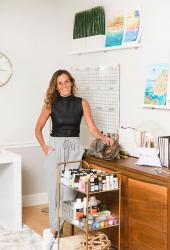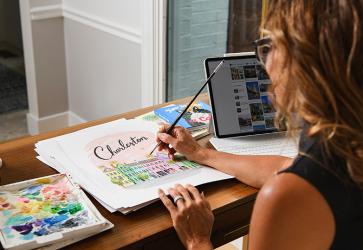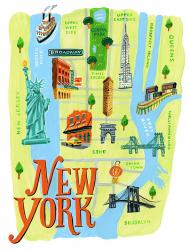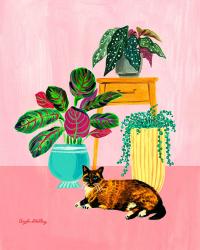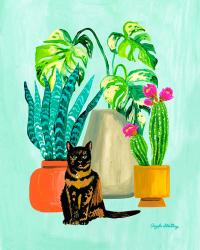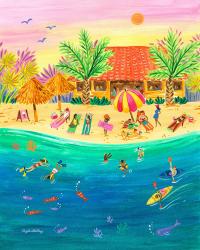Not every artist hangs their artwork in galleries to sell. In fact, it can be more fulfilling and lucrative for artists to license their art to big name clients. That’s what Angela Staehling, artist of colorful illustrations, does for her artwork. Today, her bright and vibrant designs can be found on products available everywhere from Urban Outfitters to Barnes and Noble.
But Staehling didn’t start out licensing her art from the get-go. Ever since she was a child, she loved to illustrate, even though she would go on to get her degree in graphic design at the University of Illinois. From there, she worked as an art director at an advertising agency for many years.
Then by 2000, Staehling wanted to try something new and get back into her hand drawn art. So, she completed some mural paintings for different companies and residences. It was then that she met a good friend who owned a gift store. “She introduced me to the big world of art licensing,” Staehling says, “which basically is when an artist teams up with different manufacturers who license their work for different products.”
Staehling realized licensing her art offered the best of both worlds: she could explore a lot of different art styles but always have a customer lined up for her work. “I’ve always been someone who doesn’t want to lock themselves into one style,” she says. “Through licensing, I can work with so many clients with different needs and projects.” Hence no starving artist here. Plus, by licensing her art, her work could continue to evolve naturally.
Over the years, for example, Staehling’s art has morphed in terms of style. “My art used to be very traditional and realistic,” she explains. “But now I gravitate to pop art, with punchy, bright colors.” She also paints with liquid acrylic by hand but is adept at illustrating digitally, given her training in graphic design. Her ability to do many kinds of art combined with her works’ broad appeal has made her beloved by big clients like Barnes and Noble. The bookseller recently opted to feature her art in calendars and books this past year. “It’s hard to keep track of where my art is currently,” she says, explaining how her work seems to be everywhere now. “But I try to share my latest collections on my website,” she says.
Starting this past March, Staehling has begun teaching her fellow artists how to license their art as well. The course, available on her website, teaches artists how to pitch their art, create a portfolio, and envision products for their work. “I walk artists through the entire process,” she says. “For an artist, licensing can be very freeing.” Having mastered the licensing process herself, Staehling knows just how true this is.


